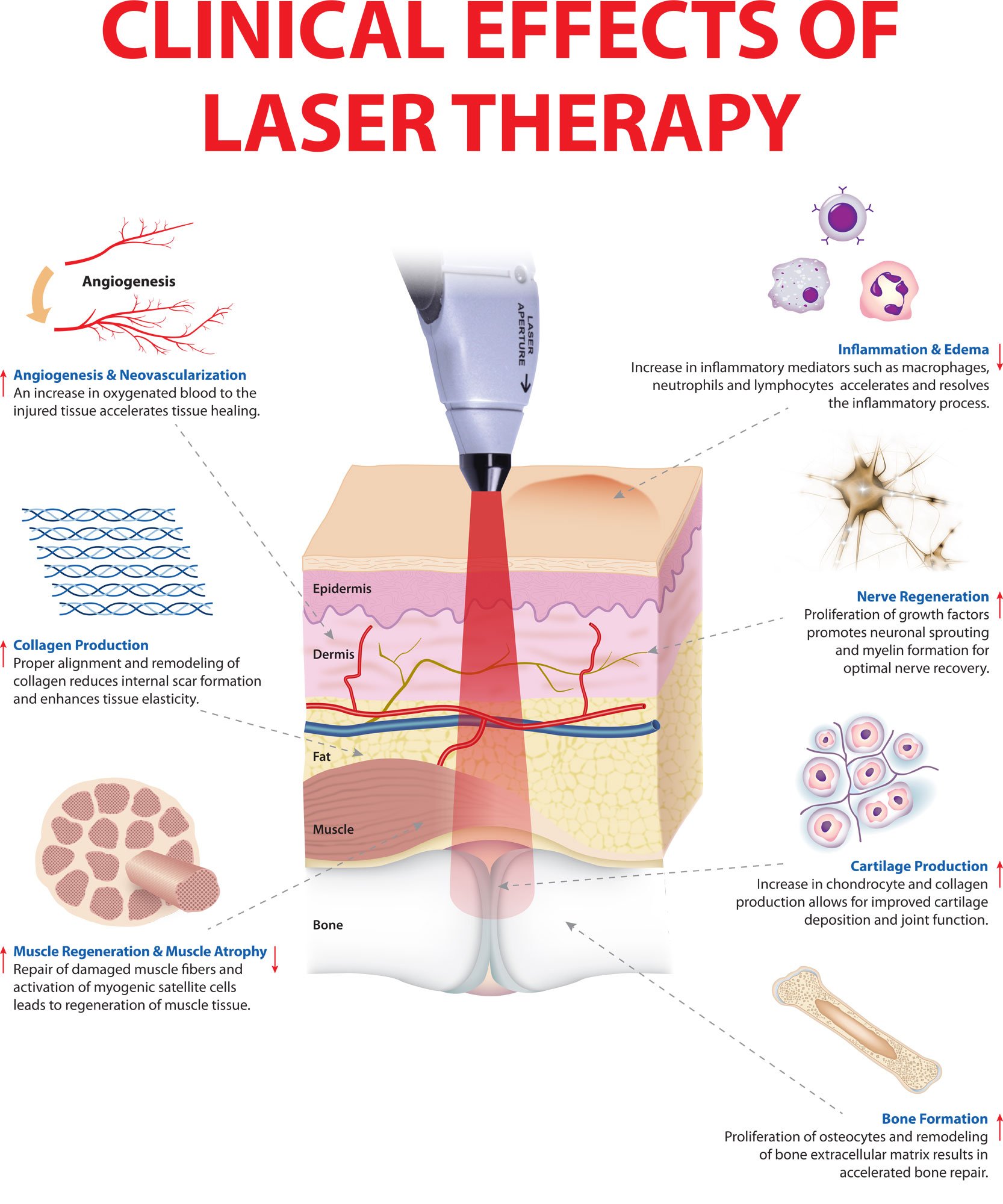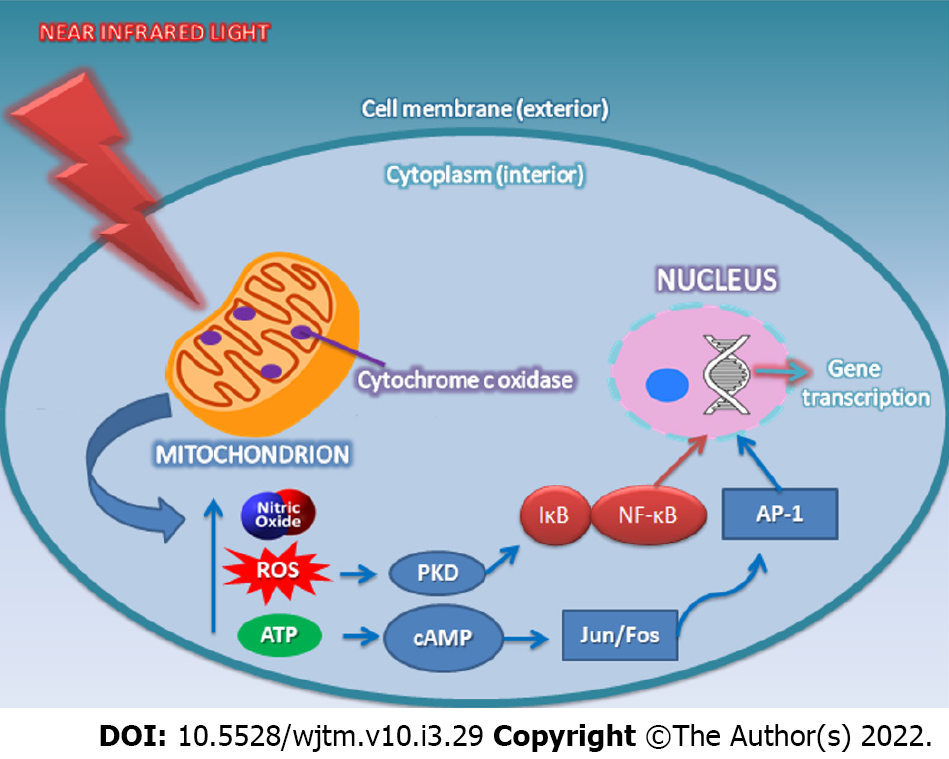Not known Facts About Photobiomodulation
Wiki Article
Some Known Incorrect Statements About Photobiomodulation
Table of ContentsSome Of PhotobiomodulationPhotobiomodulation Fundamentals ExplainedThe 2-Minute Rule for PhotobiomodulationPhotobiomodulation Fundamentals Explained
Laser treatment is a medical therapy that uses concentrated light to stimulate a procedure called. During PBM, photons get in the tissue and connect with the cytochrome c facility within mitochondria. This interaction sets off a biological waterfall of occasions that leads to a rise in cellular metabolic process, which can in addition to speed up the healing procedure.There is consensus that the application of a therapeutic dosage of light to damaged or inefficient cells results in a cellular response moderated by mitochondrial systems. Photobiomodulation. Studies have revealed that these modifications can affect discomfort and swelling, in addition to, tissue repair service
Changes in ATP, responsive oxygen types and nitric oxide adhere to light absorption by Cc, O. These effects are redox state and dose reliant.

How Photobiomodulation can Save You Time, Stress, and Money.
PBM devices have been removed for marketing by FDA through the Premarket Notification/510( k) process as adjunctive gadgets for the short-lived alleviation of discomfort. These clearances were based on the discussion of professional information to support such claims (Photobiomodulation). In this treatment, a source of light is put near or in call with the skin, enabling the light energy (photons) to penetrate cells where it engages with chromophores located in cells causing photophysical and photochemical modifications that lead to alterations at the molecular, cellular and tissue levels of the bodySurprisingly, recent study suggests that light can improve efficiency in regular tissues and cells. The prospective applications of PBMT are many and are being discovered experimentally at the fundamental science, pre-clinical and scientific degree. The current scientific uses are for the relief of pain and swelling and the therapy of sporting activities injuries.

The therapy criteria and number of sessions needed for PBMT are reliant upon place and reason. PBMT normally requires more than one therapy for optimum pain relief.
Not known Details About Photobiomodulation
Treatment specifications for PBMT were initially established utilizing cells artificial insemination and in tiny animal versions. These treatment parameters normally had a reduced irradiance and fluence and worked well for cutaneous applications. When medical professionals began to use PBMT to deal with structures that Full Report were situated deeper in the body, they utilized these criteria with unfavorable outcomes.
We now understand that these adverse studies was because of incorrect tool and treatment specifications for transcutaneous therapy of deeper structures. Current advances in laser therapy devices and more research right into the appropriate dosages have actually drastically boosted the outcomes of PBMT. For treating deep cells, the wavelength of light used figures out the deepness of infiltration into a tissue.
It is important that a medical professional uses the ideal wavelength of light and parameters to deal with a condition. One wavelength and one collection of therapy specifications will not be effective for all problems. Adverse negative effects have not been reported from making use of PBMT (Photobiomodulation). Upgraded June 27, 2016Juanita j
Light therapy is a non-invasive therapy that works by increasing the ability of the cell to create energy (ATP) to recover the location being treated. Therefore, it can decrease swelling, swelling, and discomfort in the area. Study in this field is broadening, with more in-depth study papers linked below for those that would love to discover much more.
The smart Trick of Photobiomodulation That Nobody is Talking About
In the first experiment, Dr. Endre Mester, made use of cut rats and observing exactly how the laser impacted their ability to grow hair contrasted to the group that was not receiving LLLT. He located that the group of mice getting LLLT were able to grow their hair back quicker than the group of mice that really did not receive LLLT (Hoon C, et alia; 2012).This therapy is called this means to distinguish the difference in between the lasers some careers use to cut (eg. Low-level light therapy is painless, non-invasive therapy.
why not try these out LLLT has a biphasic feedback, indicating that lower doses are generally attended be extra useful than greater doses. That being said, check these guys out dosages greater or less than the optimum dose does not affect (Hoon C, et alia; 2012). Because of this, it can be tough to have research studies on LLLT with so lots of criteria.
Some firms combined the two (LED and laser) to provide a much more all-round treatment considering that lasers can permeate deeper than LED and infrared light (Norman Doidge, The Mind's Way of Healing, 2015). During treatment, the location that is being treated is revealed to LED light from a Biography, Flex Laser, which goes to 660 nm wavelength, adhered to by infrared light at 830-840 nm wavelength.
Report this wiki page